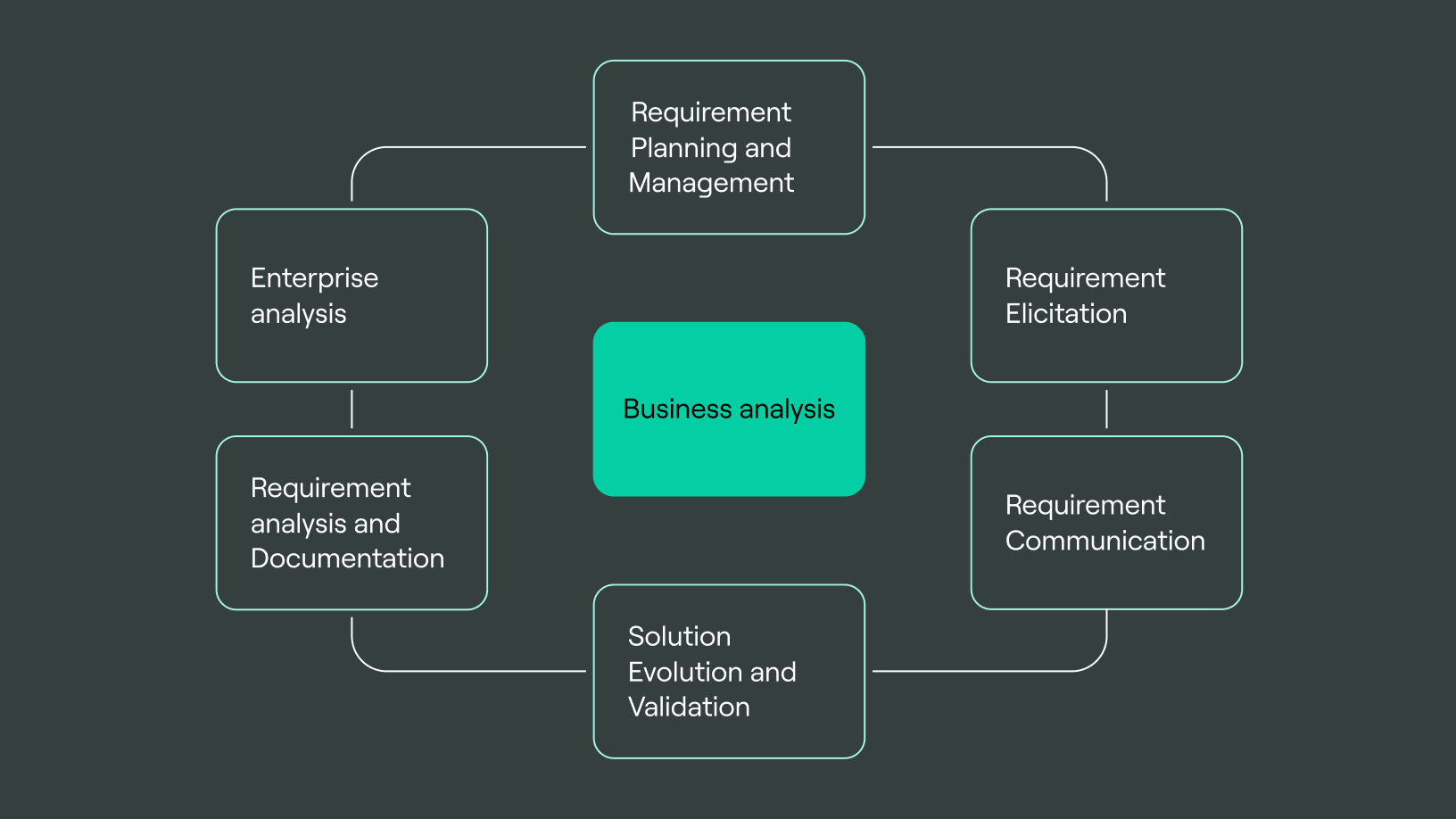
Understanding business analytics
What is business analytics?
Business Analytics refers to using statistical techniques and technology to evaluate data to better gain new understanding and enhance strategic decision‑making.
It’s used to gain value out of data to optimize business decisions.
The advent of analytics automation and the idea of big data are primarily responsible for the current development in business analytics.
With the rise of big data came the expectation that analytics, in conjunction with new types of data sources, would grow in scalability and effectiveness.
Most business analytics dashboards include most of the following elements:

- Data Aggregation: Data must be obtained, sorted, and filtered before analysis, either via volunteered data or transactional records.
- Data Mining: Filters through enormous datasets using databases, statistics, and machine learning to detect patterns and build associations to dataware, etc.
- Association and Sequence Identification: Identifies predictable acts that occur in conjunction with other actions or consecutively.
- Text Mining: Investigates and arranges massive unstructured text databases for qualitative and quantitative research.
- Forecasting: uses analyses of past data from a certain period to produce projections that predict future events or consumer behaviors.
- Predictive Business Analytics: Uses several statistical approaches to develop predicted models that extract information from datasets, discover trends, and produce a predictive score for various organizational outcomes.
- Optimization: After identifying trends and developing projections, businesses may utilize simulation tools to test several scenarios and determine which ones provide the best results.
- Data Visualization: Offers visual representations of data, such as charts and graphs, to facilitate and speed up data processing and decision‑making.
Businesses now face massive datasets, which may be exploited with the help of cutting‑edge, high‑quality business analytics software solutions and platforms.
With the use of cloud analytics technologies, businesses may see how the performance of one department affects that of others, including sales, marketing, human resources, and finances.
Furthermore, technologies like visualization, predictive insights, and scenario modeling give a wide variety of new understandings across a company.
Make Each Customer’s Experience Unique
Customer data is gathered from various sources, including traditional stores, online marketplaces, and social media. By employing data analytics to compile in‑depth profiles of their customers, companies may better understand their customer’s preferences and habits and deliver a more tailored service.
Consider a store that sells clothes both online and in real locations. E‑commerce businesses may use social media to reach out to consumers who have previously shown interest in certain product lines by analyzing customer data and the company’s social media following to develop customized social media marketing campaigns.
Contribute To Corporate Decision‑Making
Data analytics may be used by corporations to aid in decision‑making and reduce losses. When a company experiences a shift, it may use predictive and prescriptive analytics to determine the best action to take.
Businesses may use models to predict how adjustments to price or product offers would affect demand. The predictions made by such models may be checked by conducting split tests of variants of a product’s features. Once an organization has collected sales data on the modified items, they may utilize data analytics tools to evaluate the modifications' efficacy and present the findings visually, assisting decision‑makers in deciding whether or not to implement the changes company‑wide.
Simplify Operations
Data analytics is a tool that may help businesses boost their productivity.
Supply chain data analysis may reveal the causes of production delays or bottlenecks and provide insight into potential future issues. An organization may prevent production delays by supplementing or switching out a supplier if it learns via demand forecasting that one of its usual suppliers won’t be able to meet holiday demand.
Another issue is that many companies, especially retailers, have difficulty getting their stock levels right.
Factors like seasonality, holidays, and secular patterns may be analyzed using data analytics to find the ideal supply for all of a company’s goods.
Manage Risks & Setbacks
It’s impossible to avoid taking chances in the corporate world.
Theft by customers or employees, uncollected receivables, risks to workers' health and safety, and legal liabilities fall under this category.
Analyzing data may shed light on potential dangers, allowing for more proactive steps to be taken. It’s possible, for instance, for a retail chain to run a propensity model, a statistical model that may predict future behaviors or occurrences, to identify which locations are most vulnerable to theft.
Using this information, the company might decide what level of protection to implement at its shops or whether it should sell off any of those outlets altogether.
Improve Security
There are risks to data security for every company.
By analyzing and displaying historical data, businesses may determine what factors led to data breaches that have already occurred.
For instance, IT departments can use data analytics programs to read, process, and display audit logs to trace the origins and spread of an attack. IT can use this data to find security holes and apply fixes.
How does business analytics work?
Several preliminary steps are completed in BA before any data analysis is performed.
- Get a handle on the analysis’s intended business outcome.
- Decide analysis technique.
- Gather relevant business data for the study, preferably from several different systems and sources.
- Consolidate and standardize information in a central location (database, data mart, etc.).
Typically, a smaller subset of data is analyzed first. Spreadsheets with statistical functions and advanced data mining and predictive modeling software are just two examples of the analytics tools at your disposal.
The analytic process then iterates with the introduction of additional questions until the business objective is reached.
The Applications Of Business Analytics
Organizations have come to understand the interdepartmental nature of decision‑making. So managers are increasingly trying to learn how the rest of the company is affected by one department’s actions and/or decisions.
Marketing: Analytics to determine success and effect
There has been a recent uptick in efforts by marketing departments to measure and analyze the broader impact of their initiatives. Data may now fuel strategic marketing choices using AI and machine learning‑powered analysis.
Human Resources: Analytics to discover and disseminate talent insights
Human resources executives are more interested in learning how their initiatives impact the company. Human resource managers with analytical chops are better equipped to measure and anticipate results, comprehend recruiting channels, and conduct large‑scale reviews of personnel choices.
Sales: Analytics to boost your sales
Detailed analytics can dissect the buying process by factoring in all the many factors influencing a customer’s buying decision. Analytical tools provide the means to identify the tipping point in the customer journey, which may be affected by elements such as price, availability, location, time of year, and other considerations.
Finance: Analytics to support predictive organizational budgets
Finance has to collaborate with all other divisions, such as HR and Sales.

Consider some frequent instance examples of pain points:
We’ll go through more concrete instances later in this post, but for now, a common pain point maybe something like this:
- A consumer requires a service that exceeds their budget: Financial constraints prevent consumers from functioning productively, prompting them to seek more cost‑effective solutions.
- A company’s plan has too many unnecessary steps: Excessive process lead time costs money and exposes the need for it to be reduced.
- Communication across departments has become hazy: To eliminate process mistakes, teams must develop a better approach to transmitting the information.
How can organisations benefit from business analytics?
- Enhancements to the accuracy of financial projections.
- Decreased likelihood of suffering a loss.
- A more in‑depth comprehension of the state that your firm is now in.
- The significance of identifying potential problem areas.
- Assessing the practicality of proposed business ventures.
Don’t hesitate to contact us f you are interested in finding out more information on the business analytics solutions that Double Cloud provides.
In this article, we’ll talk about:
Start your trial today


